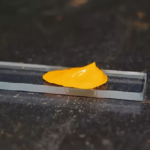Water purification using a reverse osmosis system is the most common among other analogues. This cleaning method has been used for more than forty years.
The first water filtration systems appeared in the water treatment market for several decades. Initially, such systems were positioned as a means of desalination of sea water. The reverse osmosis filter did not immediately become in demand and was used only as an alternative way of water purification.
A few years after the emergence of the reverse osmosis system, they began to spread widely around the world, and were highly appreciated by a number of large enterprises specializing in the development and supply of water treatment equipment. After the start of the mass production of reverse osmosis systems, they became so popular that by the mid-70s they were installed in almost all US houses.
Water cleaning with reverse osmosis filters
The reverse osmosis system works opposite to the natural process and is able to penetrate from the weakest salt solution to the most saturated. The system operates using a membrane with small cells, through which water comes through pressure. During the operation of the system, the water passes the membrane, which delays salts molecules with various impurities.
Despite the widespread use of water purification with the help of reverse osmosis systems, which almost completely replaced distillation, disputes about the humanity of the use of such systems in such household conditions are still not stopped. It is worth noting that when using the reverse osmosis system per liter of clean water, there are three liters of contaminated.





